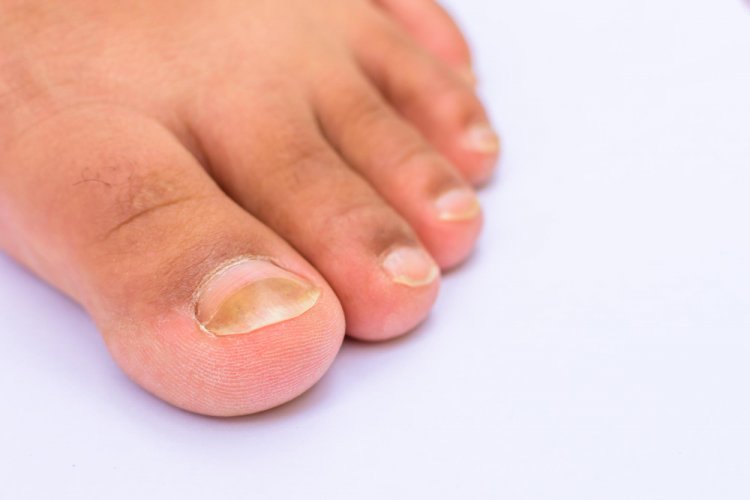Beyond Aesthetics: The Medical Impact of Fungal Nail Infections
Fungal nail infections, also known as onychomycosis, are a common condition that affects millions of people worldwide. While often not a serious health concern, fungal nail infections can be unsightly, uncomfortable, and sometimes difficult to treat. In this article, we will explore the causes, symptoms, diagnosis, and treatment options for fungal nail infections.

What Causes Fungal Nail Infections?
Fungal nail infections are primarily caused by various types of fungi, most commonly dermatophytes, but also yeasts and molds. These fungi thrive in warm, moist environments, making the feet, especially the toenails, particularly susceptible. Some common risk factors for developing fungal nail infections include:
- Poor Foot Hygiene: Not keeping the feet clean and dry can create an environment conducive to fungal growth.
- Wearing Tight Shoes: Shoes that are too tight or don't allow proper ventilation can trap moisture and encourage fungal growth.
- Walking Barefoot in Public Places: Places like swimming pools, locker rooms, and communal showers are breeding grounds for fungi.
- Nail Trauma: Injuries to the nails can create openings for fungi to enter and cause an infection.
- Certain Health Conditions: Conditions like diabetes, weakened immune system, or peripheral vascular disease can increase the risk of fungal nail infections.
Symptoms of Fungal Nail Infections
The symptoms of a fungal nail infection can vary depending on the severity and type of fungus involved. Common signs and symptoms include:
- Thickened Nails: The affected nails may become thicker than usual.
- Discoloration: Nails may turn yellow, brown, or white. In some cases, they may develop black spots or streaks.
- Brittle or Crumbly Nails: Infected nails may become brittle, crumbly, or ragged.
- Distorted Shape: Nails may lose their natural shape and become oddly shaped or warped.
- Pain or Discomfort: In advanced cases, fungal nail infections can cause pain or discomfort, especially when wearing shoes or walking.
Diagnosis
Diagnosing a fungal nail infection typically involves a physical examination and, in some cases, laboratory tests. A healthcare professional may examine the affected nails and collect nail clippings or scrapings to be analyzed under a microscope or sent to a laboratory for culture. This helps identify the type of fungus causing the infection and guides treatment decisions.
Treatment Options
Treatment for fungal nail infections can be challenging and may require patience as it can take several months to completely eliminate the infection. Treatment options include:
- Antifungal Medications: Oral antifungal medications, such as terbinafine or itraconazole, are often prescribed for severe or persistent infections. Topical antifungal creams or nail lacquers may also be recommended for milder cases.
- Surgical Intervention: In some cases, surgical removal of the infected nail may be necessary, especially if the infection is causing significant pain or discomfort.
- Laser Therapy: Laser treatment is a newer option for fungal nail infections and works by targeting the fungus without harming the surrounding tissue.
- Home Remedies: While not always effective on their own, some people find relief from fungal nail infections by using over-the-counter antifungal creams, tea tree oil, or vinegar soaks.
Prevention
Preventing fungal nail infections involves practicing good foot hygiene and taking steps to reduce the risk of exposure to fungi. Some preventive measures include:
- Keep Feet Clean and Dry: Wash your feet regularly and dry them thoroughly, especially between the toes.
- Wear Proper Footwear: Choose shoes that allow your feet to breathe and change your socks regularly, especially if they become damp.
- Protect Your Feet in Public Places: Wear flip-flops or sandals in communal showers or pool areas to reduce the risk of exposure to fungi.
- Trim Nails Carefully: Keep your nails trimmed and clean, and avoid picking at or biting your nails.
- Avoid Sharing Personal Items: Don't share nail clippers, socks, or shoes with others, as this can spread fungal infections.
In conclusion, fungal nail infections are a common condition that can be bothersome and difficult to treat. However, with proper diagnosis and treatment, most fungal nail infections can be successfully managed. By practicing good foot hygiene and taking preventive measures, you can reduce your risk of developing a fungal nail infection and maintain healthy nails.
Remember, if you suspect you have a fungal nail infection or if your symptoms are severe or persistent, it's important to consult a healthcare professional for proper diagnosis and treatment.
#FungalNailInfections #NailFungus #Onychomycosis #FungalNails #NailInfection #ToenailFungus #NailHealth #FootFungus #BestTreatment #PreventionTips #Symptoms #NaturalRemedies #AntifungalMedications #DiagnosisAndManagement #UnderstandingCauses #HealthyNailsAndFeet
Disclaimer:
The information provided in this article is for educational purposes only and should not be considered medical advice. If you have any health concerns or are experiencing symptoms, it is important to consult with a healthcare professional, such as a doctor or clinic, for proper diagnosis and treatment. Always seek the advice of your doctor or other qualified health provider with any questions you may have regarding a medical condition. Do not disregard professional medical advice or delay in seeking it because of something you have read in this article.
What's Your Reaction?





















